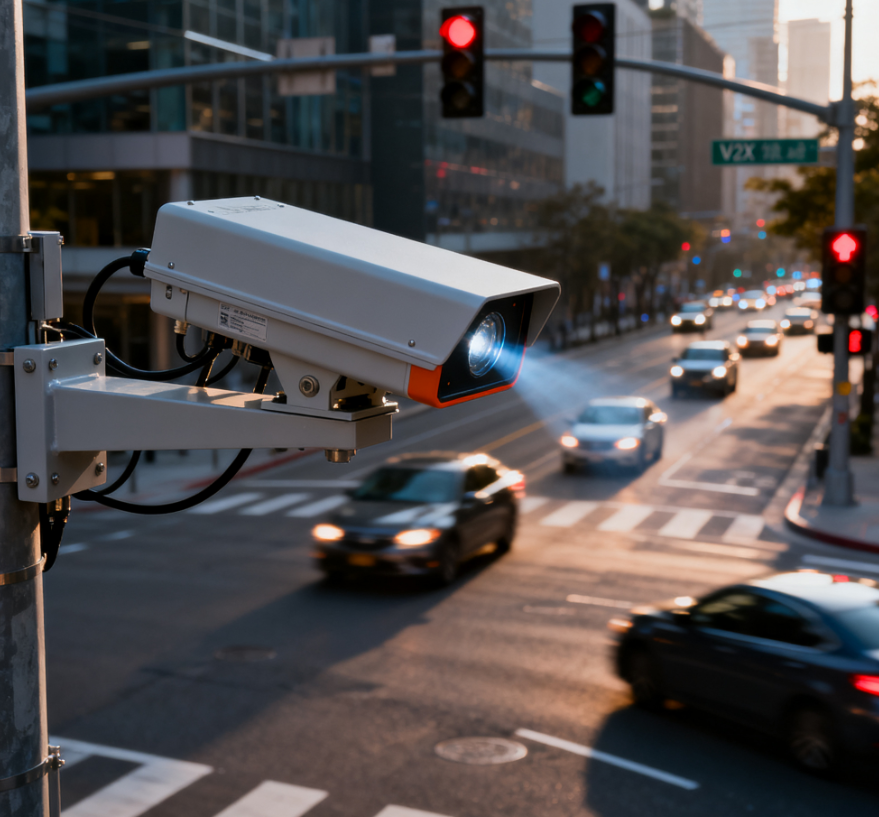Introduction
As cities worldwide grapple with congestion, accidents, and sustainability challenges, smart traffic management has become central to the vision of safer and more efficient urban mobility. Traditional tools such as cameras and infrared sensors often fail in low-light or adverse weather conditions, limiting their reliability in complex traffic environments.
Millimeter-wave (mmWave) radar is emerging as a critical solution. Operating at high frequencies such as 24 GHz, 60 GHz, and 77 GHz, it offers precise detection of distance, velocity, and angle, while maintaining strong performance in fog, rain, and at night.
A 2025 review in MDPI Electronics confirmed that mmWave radar maintains high reliability in adverse weather conditions, providing theoretical and practical evidence for its role in large-scale intelligent transportation systems MDPI Electronics, 2025.
Why mmWave Radar is Transforming Traffic Management
Unlike optical sensors, mmWave radar is:
-
All-weather reliable – performs in fog, rain, snow, and darkness.
-
Highly precise – simultaneously measures speed, range, and direction.
-
Resistant to interference – works in dense, noisy environments.
-
Privacy-friendly – does not capture identifiable images, aligning with data protection regulations.
For smart city planners, these strengths make radar a strategic technology for scaling traffic safety and efficiency.
Key Technical Concepts
-
Smart Traffic – Real-time control of traffic flow across urban road networks.
-
Radar Vehicle Detection – Using FMCW radar to detect vehicle presence, velocity, and trajectory.
-
Urban Mobility – Reducing congestion and improving safety to support sustainable city development.
Technical Challenges
-
Weather Impact – While robust, extreme storms can introduce radar signal attenuation.
-
Deployment Density – Urban corridors require many radar units; spectrum management and interference control are essential.
-
Integration with AI – Raw radar data must be enhanced with machine learning algorithms for predictive analytics and adaptive traffic control IEEE Xplore – Radar and AI Integration.
-
Standardization – Adoption depends on cost-effective chipsets and unified communication standards.
Applications & Case Studies
1. Adaptive Traffic Intersections
Deployed radars count vehicles, monitor pedestrian movement, and detect turning directions. Traffic lights then adjust in real time, reducing waiting time and congestion.
👉 Learn more about Linpowave’s smart intersection radar solutions.
2. Highway Speed Monitoring
Radar performs consistently at night and in poor visibility. Several European highways now deploy 77 GHz radar for speed enforcement and accident prevention.
3. Congestion Control in Japan and Germany
-
Japan – Cities use roadside radar to monitor lane discipline and optimize flow.
-
Germany – Radar-based monitoring has been tested in urban corridors to reduce travel time and emissions.
4. Accident Detection & Emergency Response
Radar systems instantly detect sudden stops or collisions and share alerts with traffic centers, enabling faster response and minimizing secondary accidents.
Future Outlook
The future of mmWave radar in transportation lies in sensor fusion and V2X communication:
-
Sensor Fusion – Combining radar with cameras and LiDAR provides a comprehensive traffic picture.
-
V2X (Vehicle-to-Everything) – Radar-enabled infrastructure will interact with connected vehicles and cloud systems to optimize urban mobility.
-
Scalability – As chipsets become cheaper and AI more advanced, radar will shift from pilot projects to mass deployment across smart cities.
FAQ: mmWave Radar in Smart Traffic
Q1. How does mmWave radar compare to cameras for traffic monitoring?
Cameras provide visual data but struggle in fog, rain, or low light. mmWave radar detects speed, distance, and movement accurately regardless of weather, making it a more reliable sensor for critical safety tasks.
Q2. Can mmWave radar detect pedestrians and cyclists?
Yes. With advanced algorithms, radar can detect and classify vulnerable road users, supporting Vision Zero strategies for safer cities.
Q3. Is radar safe for continuous roadside deployment?
Absolutely. mmWave radar operates at very low power levels and complies with international RF safety standards, posing no health risks.
Q4. How does radar integrate with AI?
Radar generates raw detection data. When combined with machine learning models, this data can predict traffic patterns, adjust signal timing, and detect anomalies more effectively.
Q5. What’s the role of radar in autonomous driving?
In the future, roadside radar will complement in-vehicle sensors, enabling vehicle-road-cloud coordination for autonomous and semi-autonomous transport networks.
Conclusion
Smart traffic management is one of the most impactful domains for mmWave radar. With its resilience, accuracy, and privacy benefits, radar stands out as a superior alternative to cameras and infrared sensors.
As frequency regulations mature, costs decrease, and AI-powered analytics advance, mmWave radar will move from experimental projects to mainstream deployment in urban traffic systems.
From adaptive intersections to emergency response systems, mmWave radar is laying the foundation for a safer, smarter, and more sustainable urban mobility ecosystem.
👉 Discover how Linpowave’s radar technology supports intelligent transportation: Visit our solutions page.



